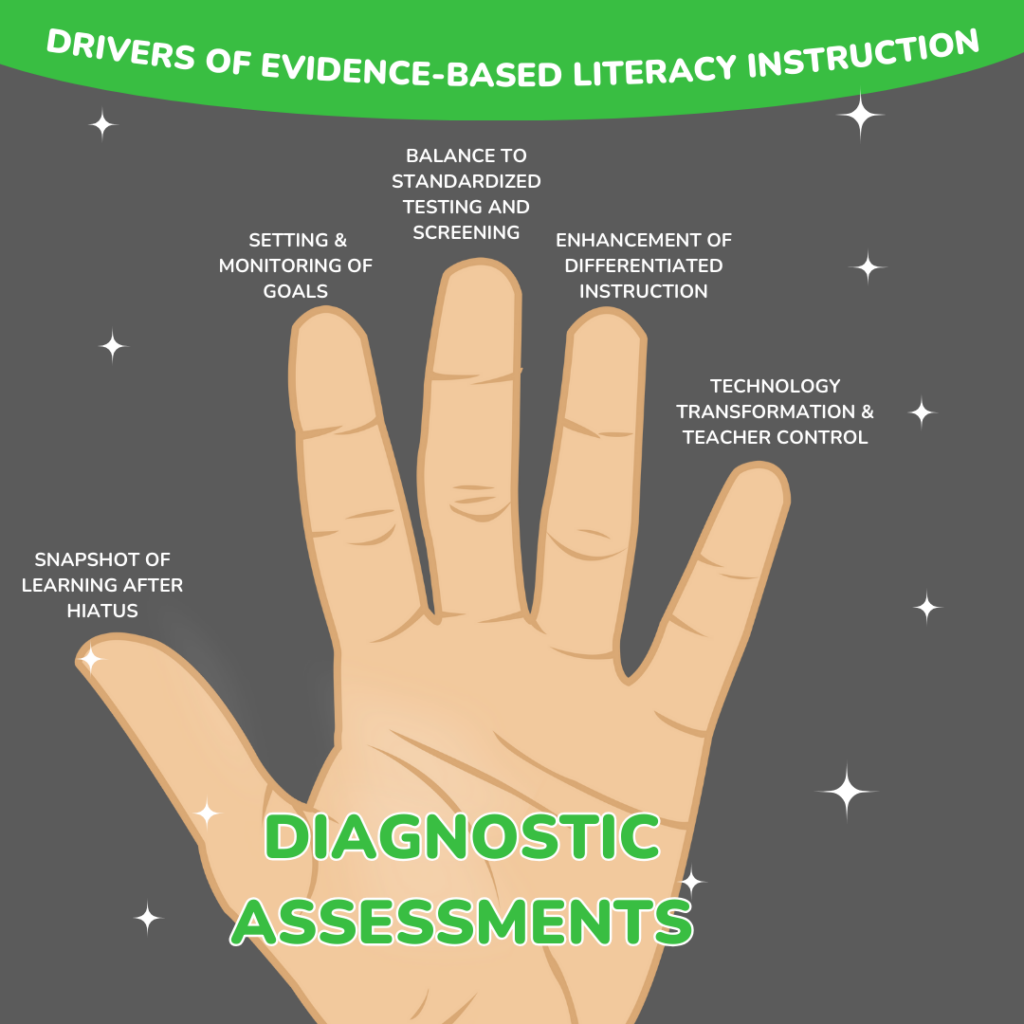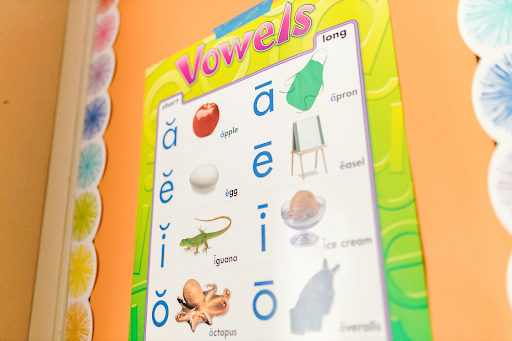The Vital Role of Progress Monitoring Assessments in Early Literacy: A Comprehensive Guide
In the realm of early literacy, progress monitoring emerges as a driver for successful student outcomes, while also being a linchpin for effective assessment strategies.
While various types of assessment serve distinct purposes, progress monitoring stands out as a dynamic and continuous process crucial for fostering optimal learning outcomes. Progress Monitoring also plays a pivotal role in enhancing all other types of assessments utilized in classrooms.
Progress monitoring assessments have been defined and contrasted with other types of assessments in previous Sprig Learning articles.
This article shines the spotlight on just progress monitoring: why it matters, the components that make it effective, and how to best implement it in a school setting.
Section One. Why Progress Monitoring Assessments Matter

Formative assessments are undeniably crucial to informing student learning and supporting classroom instruction.
Sprig has previously delved into various aspects, from weighing formal versus informal formative assessments to discussing holistic formative assessment approaches.
Within this broad landscape, progress monitoring takes center stage. Unlike static report cards, it dynamically measures progress, offering insights that may vary day by day or week by week.
This nuanced approach empowers teachers to personalize instruction dynamically, focus on foundational early literacy skills, and intervene promptly when needed.
Dynamic Learning Adaptation for Personalized Learning
Progress monitoring assessments offer a real-time and historical snapshot of a child’s academic journey, allowing educators to adapt instruction dynamically.
As noted in many early education best-practice guides, continuous monitoring facilitates timely adjustments to teaching methods, ensuring tailored support for individual needs.
Identification of Foundational Reading Skill Development
Progress monitoring assessments go beyond traditional assessments by honing in on foundational reading skills development.
As indicated in many studies, progress monitoring elucidates specific areas of growth and areas that require additional focus.
This detailed insight aids educators in crafting personalized learning journeys for unique students.
Early Intervention for Those Needing Something Beyond Core Instruction
By closely tracking progress, progress monitoring assessments allow educators to implement early interventions for struggling learners, when they are needed.
The National Center on Intensive Intervention emphasizes the significance of timely interventions, emphasizing their potential to prevent academic challenges from escalating.
Section Two. Components of an Effective Progress Monitoring Assessments System

Selecting an assessment system goes beyond mere shelf-picking; it requires a thorough evaluation based on specific criteria.
This qualification process should ask about the qualities raised in the previous section (section one), that is:
1) Do teachers have a mechanism in the progress monitoring system by which they can swiftly assess foundational skills, and then regularly adjust classroom instruction based on timely data?
2) Does the progress monitoring system come with a framework of skills so individual instruction can be personalized for every learner?
3) Does the progress monitoring system allow teachers to use the data to identify students for immediate and timely interventions, and group students to support small group instruction?
Even with affirmative answers to these questions, a school must scrutinize how well the desired progress monitoring system addresses certain components.
These key components of a progress monitoring assessment tool are mentioned in this section. Each component begins with a directive.
Clear Objectives and Benchmarks
Establish clear learning objectives and benchmarks aligned with early literacy standards.
How is progress, or lack thereof, marked in the tool? At each grade level, or at the end of each term, what is the expected progress for children to learn and master the foundational skills?
Having a clear guideline for marking progress, relative to research-based benchmarks, and then interpreting the data, allows teachers to maximize the effectiveness of the selected progress monitoring tool.
Frequency and Consistency
Regularly assess students’ progress to ensure continuous feedback.
The progress monitoring tool must be intuitive enough where recording assessments is simple and straightforward, anytime and anywhere.
Ideally, it should allow assessments to be conducted immediately after explicit instruction and concept practice, where practical. The routine of ongoing assessment then becomes a part of the teacher’s overall teaching strategy.
This consistency in assessment intervals enables educators to capture trends in skill mastery and identify immediate interventions that need to be implemented.
Varied Capabilities
Seamlessly conduct all other teaching practices, such as instruction and intervention, alongside assessments.
The role of a progress monitoring tool extends beyond measuring progress in isolation. It should seamlessly integrate with the teacher’s schedule, avoiding limitations and enhancing the effectiveness of the overall teaching practice.
Help should be provided to make observations, by taking notes for example, and match resources and activities to the skills that are being assessed.
Such diversified capabilities contained within a progress monitoring tool provide a better teaching experience for the educator.
Data-Driven Decision-Making
Utilize collected data to inform instructional decisions.
How effectively does the gathered progress monitoring data empower teachers to make informed decisions and plan their weekly instruction?
Can educators make decisions based on the percentage completion of the standards/curriculum, support small-group instruction based on student needs and strengths, and/or discern progress trends from the start of the school year?
The data should be readily accessible and easily interpretable in any good progress monitoring assessment tool.
Collaboration
Foster a collaborative approach by involving other educators, literacy specialists, and parents in progress monitoring.
How many individuals should have access to and analyze the data? Principals, teachers, early literacy specialists, parents, or a collaborative team? While the answer may vary based on the classroom’s context, the tool must inherently support collaboration.
This is crucial as it may require a multidisciplinary approach to comprehend a student’s situation, devise an appropriate plan, and ensure they acquire essential literacy skills effectively.
Section Three. Implementing an Effective Progress Monitoring System

Understanding the distinctive attributes of progress monitoring systems in the first section, and following the directives for optimizing the efficiency of each of its components in the second section, one should be well-equipped to evaluate any progress monitoring tool.
However, upon selecting a tool, the question of optimal implementation still arises. This third section addresses the effective implementation of progress monitoring.
Utilize Technology
In the contemporary, swiftly evolving era dominated by technology and increasingly diverse classrooms, dependence solely on traditional resources like binders and printed sheets can be challenging.
It’s easier when these resources can be digitized and synthesized into online tools.
Leverage educational technology tools like Sprig Reading for efficient and comprehensive progress monitoring.
Digital platforms streamline data collection, analysis, and communication, enhancing the overall progress monitoring process.
Provide Professional Development
Provide ongoing professional development for educators to enhance their understanding of progress monitoring methodologies.
Workshops and training sessions contribute to the continuous improvement of assessment practices.
While not addressed as a component of progress monitoring assessments in section two, professional development warrants attention due to its immense importance.
Whenever assistance is required to implement the system, troubleshoot challenges, or stay abreast of new best practices for future enhancements, on-demand professional development within the tool becomes a valuable resource.
Continuously Evaluate and Adapt
Regularly evaluate the effectiveness of the progress monitoring system.
Using this guide as a criterion for selecting a preferred progress monitoring tool marks the initiation of a process geared towards delivering the optimal early literacy experience, for both teachers and students.
Based on feedback, technological advancements, and evolving educational standards, new methodologies may need to be adapted in the future.
Start Progress Monitoring Assessments

In this comprehensive guide, the crucial role of progress monitoring assessments in early literacy has been explored.
Beginning with Section One, the significance of progress monitoring is emphasized as a dynamic and continuous process, offering insights for personalized instruction and timely interventions.
Section Two dives into the essential components of an effective progress monitoring system. Clear objectives and benchmarks, frequency and consistency, varied capabilities, data-driven decision-making, and collaboration are identified as key elements to ensure the system’s success.
Moving to Section Three, the focus shifts to the implementation of an effective progress monitoring system. Embracing technology, providing ongoing professional development, and continuous evaluation and adaptation are highlighted as essential steps to enhance the overall progress monitoring assessment process.
By following this comprehensive approach, educators can navigate the complexities of progress monitoring assessments in early literacy, ensuring optimal learning experiences for both teachers and students.
Progress monitoring assessments are often closely linked to diagnostic assessments. Read this article and its follow-up, to understand more about diagnostic assessments.






















